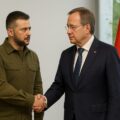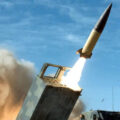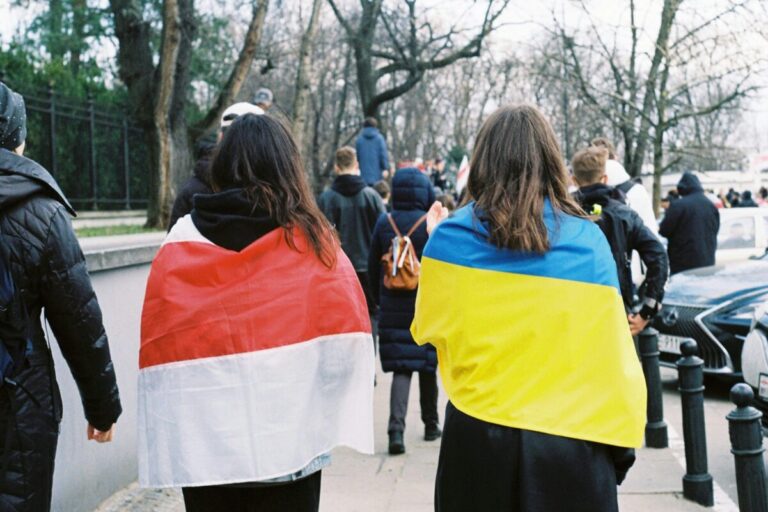
Russia threatens to strike Dnipro bridges and Kyiv’s government district: what it really means
In early June, a wave of provocative signals emerged from Russia — some rhetorical, others disturbingly real. From open threats to destroy Dnipro bridges to the cynical delivery of over a thousand frozen bodies of Ukrainian soldiers without prior coordination, it’s clear that we are witnessing not isolated incidents, but elements of a broader pressure strategy. Understanding this context is crucial — both to avoid oversimplification and to see what’s truly at stake.
Threatening the Dnipro Bridges: Why These Are Not Just Words
In a recent interview, Russia’s ambassador to the UK, Andrey Kelin, said the following:
“We could strike all the bridges across the Dnipro. There aren’t that many. We could cut off a third of Ukraine’s territory.”
This was not uttered on a Russian talk show — but in a formal English-language interview, aimed at a Western audience. And it was said with a calculated smirk — a gesture designed to emphasize the threat.
To put it simply: this is verbal pressure. The intended message is clear — Russia is signaling to the West that it has “punishment tools” for Ukraine’s cross-border drone and missile strikes, particularly after Ukraine destroyed several Russian aircraft.
But this narrative is not new. Russia has repeatedly floated the idea of cutting off Left-Bank Ukraine by targeting key bridges like those in Kremenchuk, Kaniv, and over the Dnipro Hydroelectric Station. Some of these have already been targeted in previous attacks, though not fully destroyed.
Another Option “on the Table”: Striking Kyiv’s Government District?
According to reporting by Reuters, the Kremlin is also considering launching a strike on Kyiv’s government district — a symbolic move meant to retaliate for recent hits on Russian territory.
Western defense analyst Michael Kofman suggests that Russian forces might target administrative buildings in Ukraine’s capital, or possibly defense industry facilities — in an effort to “paralyze the nervous system” of the Ukrainian state.
This fits a pattern of escalation Russia has used throughout the full-scale war: attack civilian or symbolic targets to induce fear and chaos.
The “Frozen Bodies” Provocation: What Happened?
Simultaneously, Russia conducted a psychological operation on the information front. On June 6–7, reports emerged that Russia had delivered over 1,200 bodies of fallen Ukrainian soldiers to the border — demanding that Ukraine take them back immediately.
Putin’s aide Vladimir Medinsky made a chilling remark:
“A shipment of frozen bodies of Ukrainian soldiers has already arrived.”
The term “shipment” outraged many Ukrainians. According to Ukrainian officials, there had been no agreement on logistics, timing, or coordination of such a handover. While names of the deceased were being exchanged, the actual return — via containers and industrial freezers — came without warning, framed like an ultimatum.
This wasn’t simply a bureaucratic failure. It was a deliberate provocation. Sources suggest this was done to stir public anger, unsettle families, and push the narrative that Ukraine “doesn’t care” about its fallen soldiers.
Revelant
How These Actions Are Connected
At first glance, the threats, attacks, and provocations may seem unrelated. But when viewed together, a clear logic emerges:
- Verbal bridge threats — designed to spread panic and fear nationwide.
- Hints at targeting Kyiv — to destabilize the capital and shift attention away from Russia’s battlefield failures.
- The “body shipment” stunt — aimed at breaking morale, fueling public outrage, and framing Ukraine as callous.
This is a layered psychological campaign. Not just about where to strike — but about shaping perception, inducing fear, and undermining trust.
What Must Be Understood?
Russia continues to blend kinetic warfare with psychological pressure. But none of these tactics — not the threats, not the provocations, not even the inhuman delivery of the dead — will stop Ukraine, nor the global support it has earned.
The key is clarity: recognizing manipulation when we see it, questioning the sources, and refusing to react the way Russia wants. Behind every “gesture” lies not compassion, but cold, calculated intent.















